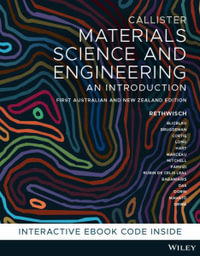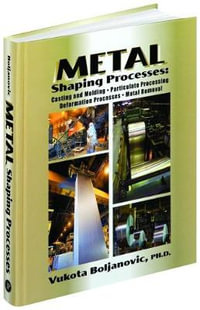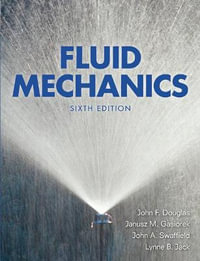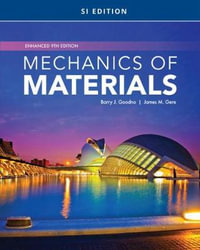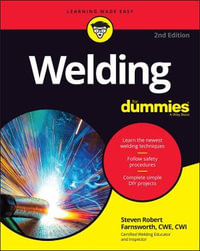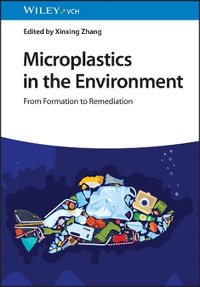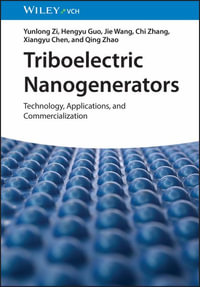
Surface Science
Foundations of Catalysis and Nanoscience
Hardcover | 30 January 2020 | Edition Number 4
At a Glance
528 Pages
254.0 x 178.0 x 28.45
Hardcover
$202.78
or 4 interest-free payments of $50.70 with
orAims to ship in 7 to 10 business days
An updated fourth edition of the text that provides an understanding of chemical transformations and the formation of structures at surfaces
The revised and enhanced fourth edition of Surface Science covers all the essential techniques and phenomena that are relevant to the field. The text elucidates the structural, dynamical, thermodynamic and kinetic principles concentrating on gas/solid and liquid/solid interfaces. These principles allow for an understanding of how and why chemical transformations occur at surfaces. The author (a noted expert on in the field) combines the required chemistry, physics and mathematics to create a text that is accessible and comprehensive.
The fourth edition incorporates new end-of-chapter exercises, the solutions to which are available on-line to demonstrate how problem solving that is relevant to surface science should be performed. Each chapter begins with simple principles and builds to more advanced ones. The advanced topics provide material beyond the introductory level and highlight some frontier areas of study. This updated new edition:
- Contains an expanded treatment of STM and AFM as well as super-resolution microscopy
- Reviews advances in the theoretical basis of catalysis and the use of activity descriptors for rational catalyst design
- Extends the discussion of two-dimensional solids to reflect remarkable advances in their growth and characterization
- Delves deeper into the surface science of electrochemistry and charge transfer reactions
- Updates the “Frontiers and Challenges” sections at the end of each chapter as well as the list of references
Written for students, researchers and professionals, the fourth edition of Surface Science offers a revitalized text that contains the tools and a set of principles for understanding the field.
Instructor support material, solutions and PPTs of figures, are available at http://booksupport.wiley.com
Dedication i
Preface ii
Surface Science: Fundamentals of Catalysis and Nanoscience 1
Introduction 1
I.1 Heterogeneous Catalysis 2
I.2 Why surfaces? 4
I.3 Where are surfaces, interfaces and nanoscale objects important? 5
I.3.1 Ammonia Synthesis 5
I.3.2 Gas-to-Liquids: Fischer-Tropsch Synthesis, C1 Chemistry & Artificial Photosynthesis 6
I.3.3 Clean Propulsion Three-way Catalyst, Lithium ion batteries, fuel cells 7
I.3.4 Water Splitting: Oxygen and hydrogen evolution reactions (OER and HER) 8
I.4 Semiconductor Processing and Nanotechnology 9
I.5 Other Areas of Relevance 12
I.6 Structure of the Book 12
Further Reading 14
References 14
Chapter 1. Surface and Adsorbate Structure 2
1.1 Clean Surface Structure 3
1.1.1 Ideal flat surfaces 3
1.1.2 High index and vicinal planes 9
1.1.3 Faceted Surfaces 10
1.1.4 Bimetallic Surfaces 11
1.1.5 Oxide and Compound Semiconductor Surfaces 13
1.1.6 The Carbon Family: Diamond, Graphite, Graphene, Fullerenes and Carbon Nanotubes 17
1.1.7 Two-Dimensional Solids (2D solids) 26
Advanced Topic: Stacked Two-Dimensional Materials and Moire Superlattices 28
1.1.8 Porous Solids 31
1.2 Reconstruction and adsorbate structure 34
1.2.1 Implications of surface heterogeneity for adsorbates 34
1.2.2 Clean Surface Reconstructions 37
1.2.3 Adsorbate induced reconstructions 39
1.2.4 Islands 45
1.2.5 Chiral surfaces 45
1.3 Band structure of solids 48
1.3.1 Bulk electronic states 48
1.3.2 Metals, semiconductors and insulators 50
1.3.3 Energy levels at metal interfaces 57
1.3.4 Energy Levels at Metal-Semiconductor Interfaces 61
1.3.5 Surface electronic states 64
1.3.6 Size effects in nanoscale systems 67
1.4 The vibrations of solids 71
1.4.1 Bulk systems 71
1.4.2 Nanoscale systems 73
1.5 Summary of important concepts 74
1.6 Frontiers and Challenges 75
1.7 Further Reading 76
1.8 Exercises 77
References 81
Chapter 2. Experimental Probes and Techniques 2
2.1 Ultrahigh vacuum 2
2.1.1 The need for UHV 2
2.1.2 Attaining UHV 4
2.2 Light and electron sources 6
2.2.1 Types of lasers 7
2.2.2 Atomic lamps 10
2.2.3 Synchrotrons 10
2.2.4 Free electron laser (FEL) 11
2.2.5 Electron guns 11
2.3 Molecular beams 12
2.3.1 Knudsen molecular beams 13
2.3.2 Free jets 15
2.2.3 Comparison of Knudsen and Supersonic Beams 18
2.4 Scanning probe techniques 22
2.4.1 Scanning tunnelling microscopy (STM) 23
2.4.2 Scanning tunnelling spectroscopy (STS) 29
2.4.3 Scanning electrochemical microscopy (SECM) 32
2.4.4 Atomic force microscopy (AFM) 32
2.4.5 Near-field optical microscopy (NSOM) 39
2.5 Low energy electron diffraction (LEED) 46
Advanced Topic: LEED structure determination 51
2.6 Electron spectroscopy 57
2.6.1 X-ray photoelectron spectroscopy (XPS) 59
2.6.1.1 Quantitative analysis 64
2.6.2 Ultraviolet photoelectron spectroscopy (UPS) 66
2.6.2.1 Angle-resolved ultraviolet photoemission (ARUPS) 69
Advanced Topic: Multiphoton photoemission (MPPE) 73
2.6.3 Auger electron spectroscopy (AES) 75
2.6.3.1 Quantitative analysis 78
2.6.4 Photoelectron microscopy 81
2.6.4.1 Profiling and xy mapping with XPS 81
2.6.4.2 Depth profiling and xy mapping with AES 82
2.6.4.3 Photoemission electron microscope (PEEM) 82
2.7 Vibrational spectroscopy 83
2.7.1 IR spectroscopy 88
2.7.2 Electron energy loss spectroscopy (EELS) 94
2.7.2.1 Three scattering mechanisms 96
2.8 Second Harmonic and Sum Frequency Generation 97
2.9 Summary of important concepts 101
2.10 Frontiers and challenges 102
2.12 Further reading 103
2.13 Exercises 104
References 112
Chapter 3. Chemisorption, Physisorption and Dynamics 1
3.1 Types of interactions 1
3.2 Binding sites and diffusion 3
3.3 Physisorption 9
Advanced Topic: Theoretical Description of Physisorption 9
3.4 Non-dissociative chemisorption 11
3.4.1 Theoretical treatment of chemisorption 11
3.4.2 The Blyholder model of CO chemisorption on a metal 17
3.4.3 Molecular oxygen chemisorption 21
3.4.4 The binding of ethene 22
3.5 Dissociative chemisorption: H2 on a simple metal 25
3.6 What determines the reactivity of metals? 28
3.7 Atoms and molecules incident on a surface 34
3.7.1 Scattering channels 35
3.7.2 Non-activated adsorption 38
3.7.3 Hard cube model 42
3.7.4 Activated adsorption 46
3.7.5 Direct versus precursor mediated adsorption 48
3.8 Microscopic reversibility in ad/desorption phenomena 51
3.9 The influence of individual degrees of freedom on adsorption and desorption 59
3.9.1 Energy exchange 59
3.9.2 PES topography and the relative efficacy of energetic components 62
3.10 Translations, corrugation, surface atom motions 63
3.10.1 Effects on adsorption 63
3.10.2 Connecting adsorption and desorption with microscopic reversibility 68
3.10.3 Normal energy scaling 70
3.11 Rotations and adsorption 72
3.11.1 Non-activated adsorption 72
3.11.2 Activated adsorption 76
3.12 Vibrations and adsorption 76
3.13 Competitive adsorption and collision induced processes 78
3.13.1 High energy collisions 82
3.14 Classification of reaction mechanisms 84
3.14.1 Langmuir-Hinshelwood mechanism 84
3.14.2 Eley-Rideal mechanism 87
3.14.3 Hot atom mechanism 89
3.15 Measurement of sticking coefficients 91
3.16 Summary of Important Concepts 97
3.17 Frontiers and challenges 99
3.18 Further Reading 100
3.19 Exercises 101
References 113
Table of Figures and Tables iii
Chapter 4. Thermodynamics and Kinetics of Adsorption & Desorption 5
4.1 Thermodynamics of ad/desorption 2
4.1.1 Single-particle versus distribution-averaged quantities 2
4.1.2 Binding energies and activation barriers 5
4.1.3 Thermodynamic quantities 8
4.1.4 Some definitions 9
4.1.5 Absorption enthalpy 11
4.2 Adsorption isotherms from thermodynamics 15
4.2.1 Adsorbate chemical potential and activity 19
4.3 Lateral interactions 21
4.4 Rate of desorption 24
4.4.1 First-order desorption 25
4.4.2 Transition state theory treatment of first-order desorption 26
4.4.3 Thermodynamic treatment of first-order desorption 33
4.4.4 Adsorption entropy 36
4.4.5 Configurational entropy 40
4.4.6 Non-first-order desorption 41
4.5 Kinetics of adsorption 44
4.5.1 CTST approach to adsorption kinetics 44
4.5.2 Langmuirian adsorption: Non-dissociative adsorption 45
4.5.3 Langmuirian adsorption: Dissociative adsorption 49
4.5.4 Dissociative Langmuirian adsorption with lateral interactions 50
4.5.5 Precursor mediated adsorption 52
4.6 Adsorption isotherms from kinetics 55
4.6.1 Langmuir Isotherm 55
4.6.2 Classification of adsorption isotherms 57
4.6.3 Thermodynamic measurements via isotherms 60
4.7 Temperature programmed desorption (TPD) 61
4.7.1 The basis of TPD 61
4.7.2 Qualitative analysis of TPD spectra 64
4.7.3 Quantitative analysis of TPD spectra 68
4.8 Summary of Important Concepts 72
4.9 Frontiers and Challenges 74
4.10 Further Reading 74
4.11 Exercises 75
References 85
Chapter 5. Liquid interfaces 1
5.1 Structure of the liquid/solid interface 2
5.1.1 The structure of the water/solid interface 4
5.2 Surface energy and surface tension 9
5.2.1 Liquid surfaces 10
5.2.2 Curved interfaces 14
5.2.3 Surface Melting and Surface Crystallization 17
5.2.4 Capillary Waves 18
5.3 Liquid films 21
5.3.1 Liquid-on-solid films 21
5.4 Langmuir films 25
5.5 Langmuir-Blodgett films 29
5.5.1 Capillary condensation and meniscus formation 29
5.5.2 Vertical Deposition 33
5.5.3 Horizontal Lifting (Schaefer's method) 36
5.6 Self assembled monolayers (SAMs) 37
5.6.1 Thermodynamics of self-assembly 38
5.6.2 Amphiphiles and bonding interactions 40
5.6.3 Mechanism of SAM formation 41
Advanced Topic: Chemistry with Self Assembled Monolayers 46
5.7 Thermodynamics of liquid interfaces 47
5.7.1 The Gibbs model 48
5.7.2 Surface Excess 50
5.7.3 Interfacial enthalpy and internal, Helmholtz and Gibbs surface energies 50
5.7.4 Gibbs adsorption isotherm 52
5.8 Electrified and Charged Interfaces 54
5.8.1 Surface charge and potential 54
5.8.2 Relating work functions to the electrochemical series 58
5.9 Summary of important concepts 61
5.10 Frontiers and challenges 62
5.11 Further reading 63
5.12 Exercises 64
References 70
Chapter 6. Heterogeneous Catalysis 1
6.1 The prominence of heterogeneous reactions 1
6.2 How to choose a catalyst 4
6.3 Sabatier analysis and optimal catalyst selection 9
6.4 Measurement of surface kinetics and reaction mechanisms 13
6.5 Haber-Bosch process 19
6.6 From microscopic kinetics to catalysis 27
6.6.1 Reaction kinetics 27
6.6.2 Kinetic analysis using De Donder relations 30
6.6.3 Counting sites in surface kinetics 31
6.6.4 Definition of the rate determining step (RDS) 33
6.6.5 Microkinetic analysis of ammonia synthesis 36
6.7 Fischer-Tropsch synthesis and related chemistry 40
6.7.1 Steam Reforming 41
6.7.2 Water gas shift reaction 42
6.7.3 Methanol synthesis 42
6.7.4 Fischer-Tropsch synthesis 43
6.8 The three-way automotive catalyst 49
6.9 Promoters 54
6.10 Poisons 56
6.11 Bimetallic & bifunctional catalysts 58
6.12 Rate oscillations and spatiotemporal pattern formation 61
Advanced Topic: Cluster assembled catalysts 65
6.13 Electrocatalysis 66
6.13.1 Hydrogen evolution reaction (HER) and H2 oxidation reaction (HOR) 68
6.13.2 Oxygen evolution reaction (OER) and O2 reduction reaction (ORR) 70
Advanced Topic: Water Splitting in Photosystem II 73
6.14 Summary of Important Concepts 75
6.15 Frontiers and Challenges 76
6.16 Further Reading 77
6.17 Exercises 78
Chapter 7. Growth and Epitaxy 7
7.1 Stress and Strain 7
7.2 Types of Interfaces 12
7.2.1 Strain Relief 13
7.3 Surface Energy, Surface Tension & Strain Energy 15
7.4 Growth Modes 20
7.4.1 Solid-on-Solid Growth 20
7.4.2 Strain in Solid-on-Solid Growth 22
Layer by layer Growth = Frank-van der Merwe (FM) [34] 22
Layer + island growth = Stranski-Krastanov (SK) [35] 22
Three Dimensional Island Growth = Volmer-Weber (VW) [36] 23
7.4.3 Ostwald Ripening 25
7.4.4 Equilibrium Overlayer Structure and Growth Mode 27
7.5 Nucleation theory 30
7.5.1 Cloud Formation: Heterogeneous versus Homogeneous Nucleation 34
7.6 Growth Away from Equilibrium 35
7.6.1 Thermodynamics versus Dynamics 35
7.6.2 Non-equilibrium growth modes 37
7.7 Techniques for Growing Layers 41
7.7.1 Molecular Beam Epitaxy (MBE) 42
7.7.2 Chemical Vapour Deposition (CVD) 47
7.7.3 Atomic Layer Deposition (ALD) 53
7.7.4 Ablation Techniques 54
7.7.5 Growth on liquid metals 55
7.7.6 van der Waals epitaxy 56
7.8 Catalytic Growth of Nanotubes and Nanowires 59
7.9 Etching 67
7.9.1 Classification of Etching 69
7.9.2 Etch morphologies 74
7.9.3 Porous Solid Formation 76
7.9.4 Silicon etching in aqueous fluoride solutions 80
7.9.5 Selective Area Growth and Etching 85
7.9.6 Atomic Layer Etching (ALE) 89
Advanced Topic: Nanosphere Lithography 91
7.9.7 Coal Gasification and Graphite Etching 93
7.10 Summary of Important Concepts 95
7.11 Frontiers and Challenges 96
7.12 Further Reading 98
7.13 Exercises 99
References 103
Chapter 8. Laser & Non-thermal chemistry: Photon and electron stimulated chemistry & atom manipulation 1
8.1 Photon Excitation of Surfaces 2
8.1.1 Light absorption by condensed matter 2
8.1.2 Lattice heating 5
8.1.3 Advanced Topic: Temporal evolution of electronic excitations 11
8.1.3.1 Slow pulse excitation (>100 ps) 16
8.1.3.2 Ultrafast pulse excitation (1–10 ps) 17
8.1.3.3 Even faster (<1 ps) 18
8.1.4 Summary of Laser Excitations 22
8.1.5 Plasmon Excitation 23
8.2 Mechanisms of Electron and photon stimulated processes 24
8.2.1 Direct versus substrate mediated processes 24
8.2.2 Gas phase photochemistry 26
8.2.3 Gas Phase Electron Stimulated Chemistry 29
8.2.4 MGR & Antoniewicz models of DIET 30
8.2.5 Desorption Induced by Ultrafast Excitation 35
8.3 Photon and electron induced chemistry at surfaces 37
8.3.1 Thermal desorption, reaction and diffusion 37
8.3.2 Stimulated desorption/reaction 39
8.3.2.1 High-Energy Radiation 40
8.3.2.2 IR-Visible-UV radiation 46
8.3.2.3 Ultrafast IR-Visible-UV radiation 49
8.3.3 Ablation 51
8.4 Charge transfer & electrochemistry 61
8.4.1 Homogeneous Electron Transfer 63
8.4.2 Corrections to and improvements on Marcus theory 68
8.4.3 Heterogeneous Electron Transfer 69
8.4.4 Current flow at a metal electrode 74
8.4.5 Advanced Topic: Semiconductor Photoelectrodes and the Gratzel Photovoltaic Cell 77
8.5 Tip induced process: Mechanisms of atom manipulation 83
8.5.1 Electric Field Effects 84
8.5.2 Tip Induced ESD 84
8.5.3 Vibrational Ladder Climbing 87
8.5.4 Pushing 90
8.5.5 Pulling 91
8.5.6 Atom Manipulation by Covalent Forces 91
8.6 Summary of Important Concepts 94
8.7 Frontiers and Challenges 96
8.8 Further Reading 97
8.9 Exercises 98
References 104
ISBN: 9781119546634
ISBN-10: 111954663X
Published: 30th January 2020
Format: Hardcover
Language: English
Number of Pages: 528
Audience: Professional and Scholarly
Publisher: John Wiley & Sons (UK)
Country of Publication: US
Edition Number: 4
Dimensions (cm): 254.0 x 178.0 x 28.45
Weight (kg): 1.27
Shipping
| Standard Shipping | Express Shipping | |
|---|---|---|
| Metro postcodes: | $9.99 | $14.95 |
| Regional postcodes: | $9.99 | $14.95 |
| Rural postcodes: | $9.99 | $14.95 |
How to return your order
At Booktopia, we offer hassle-free returns in accordance with our returns policy. If you wish to return an item, please get in touch with Booktopia Customer Care.
Additional postage charges may be applicable.
Defective items
If there is a problem with any of the items received for your order then the Booktopia Customer Care team is ready to assist you.
For more info please visit our Help Centre.
You Can Find This Book In
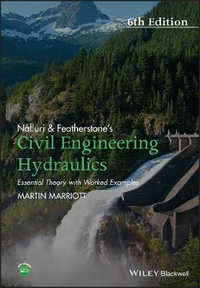
Nalluri And Featherstone's Civil Engineering Hydraulics
6th Edition - Essential Theory with Worked Examples
Paperback
RRP $82.95
$54.35
OFF




